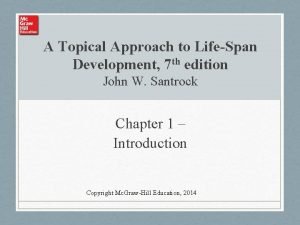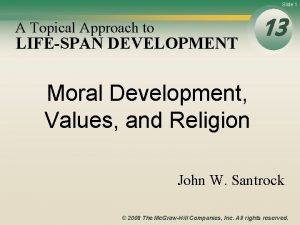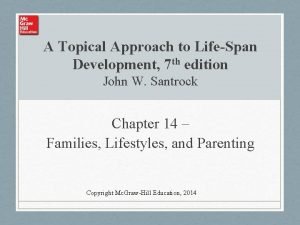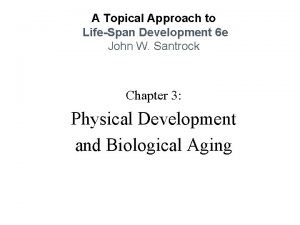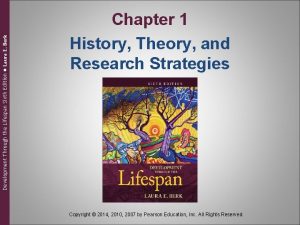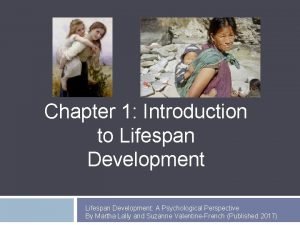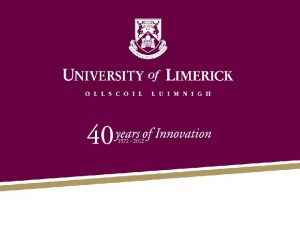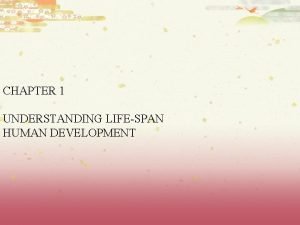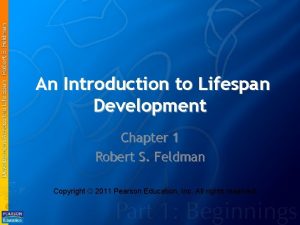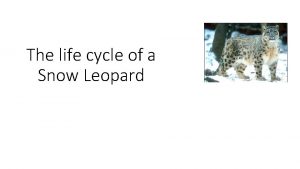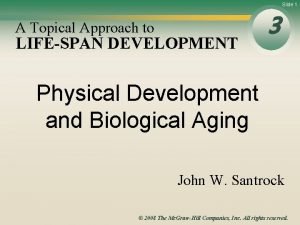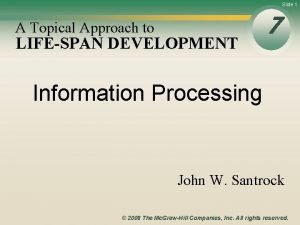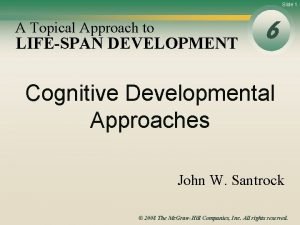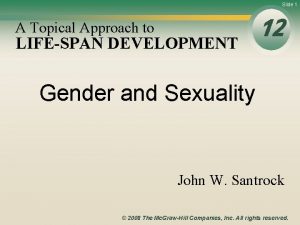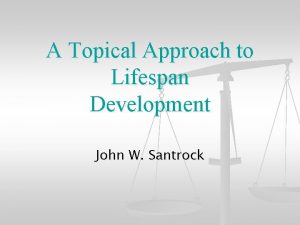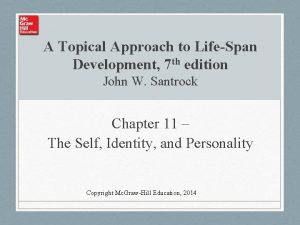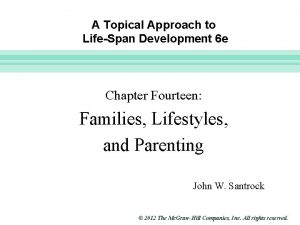A Topical Approach to LifeSpan Development 7 th














- Slides: 14

A Topical Approach to Life-Span Development, 7 th edition John W. Santrock Chapter 9 – Language Development Copyright Mc. Graw-Hill Education, 2014

What Is Language? • Language • Form of communication – whether spoken, written, or signed – based on a system of symbols • Words used by a community and rules for varying and combining them • All languages have: • Infinite generativity – ability to produce an endless number of meaningful sentences using a finite set of words and rules • Organizational rules – aka syntax & semantics (meaning of words and sentences) Copyright Mc. Graw-Hill Education, 2014


How Language Develops • Infants use early vocalizations to practice making sounds, communication, and attract attention: • Crying (birth) • Cooing (8 weeks to 7 months) • Babbling (6 -7 months) • Infants begin using gestures at about 8 -12 mo. (telegraphic speech) • Showing and pointing • Some gestures are symbolic • Pointing considered an important social aspect of language Copyright Mc. Graw-Hill Education, 2014

How Language Develops • Infants understand words (receptive language) before they can speak them (expressive language). • Between 5 -12 months of age, infants indicate first understanding of words • First words usually spoken between 10 -15 months of age • Common first words: • • • Names of important people Familiar animals Vehicles and toys Food and body arts Clothes and household terms Greetings Copyright Mc. Graw-Hill Education, 2014

How Language Develops • By 18 -24 months, children usually vocalize using two-word utterances • Rely on gesture, tone, and context to convey meaning • Meanings communicated through two-word speech: • Identification: “See doggie” • Location: “Book there” • Repetition: “More milk” • Nonexistence: “All gone” • Possession: “My candy” • Attribution: “Big car” • Agent-action: “Mama walk” • Question: “Where ball? ” Copyright Mc. Graw-Hill Education, 2014

How Language Develops • During preschool years, most children gradually become more sensitive to sounds of spoken words and more capable of producing all sounds of their language • By the time children move beyond two-word utterances, they demonstrate knowledge of morphology rules (3 – 4 years of age “grammar explosion”) • Using plural and possessive of nouns • Appropriate endings on verbs • Use of prepositions, articles, and various forms of verb “to be” • Learn and apply rules of syntax • Show growing mastery of complex rules for word order • Vocabulary development is dramatic Copyright Mc. Graw-Hill Education, 2014

How Language Develops • Early literacy programs for preschoolers should emphasize: • • • Oral language Reading and writing Phonological and syntactical knowledge Letter identification Conceptual knowledge about print and its conventions and functions • Parents and teachers provide supportive atmosphere to develop literacy skills Copyright Mc. Graw-Hill Education, 2014

How Language Develops • Whole-language approach • Approach to reading instruction that parallels children’s natural language learning • Taught to recognize whole words or sentences and to use context of what they are reading to guess meanings of words • Reading often integrated with other subjects and real-world materials • Phonics approach • Reading instruction that teaches basic rules for translating written symbols into sounds • Children benefit from both approaches, but instruction in phonics needs to be emphasized Copyright Mc. Graw-Hill Education, 2014

How Language Develops • In early childhood, children’s motor skills progress to the point that they can begin printing letters • As they begin to write, children often invent spellings, basing them on sounds of words they hear • Writing skills develop as language and cognitive skills develop • Metacognitive are skills needed to be a competent writer Children begin to understand the social uses of language. Copyright Mc. Graw-Hill Education, 2014

How Language Develops • Adolescents develop greater sophistication in word use • Understanding metaphors, implied comparison between unlike things • Better able to understand satire, or use of irony, derision, or wit • More advanced logical thinking allows adolescents to understand complex literary works • Often speak dialect with peers • Characterized by jargon and slang Copyright Mc. Graw-Hill Education, 2014

How Language Develops • Older adults’ speech is typically lower in volume, slower, less precisely articulated, and less fluent (more pauses, fillers, repetition, and corrections) • Speech skills adequate for everyday communication • Slower information-processing speed and decline in working memory may contribute to reduced language efficiency • Word finding/generation difficulties among earliest signs of Alzheimer disease Copyright Mc. Graw-Hill Education, 2014

Biological and Environmental Influences • Brain’s role in language • Two regions of the brain involved in language abilities: • Broca’s area – region of the left frontal lobe involved in producing words • Wernicke’s area – region of brain’s left hemisphere involved in language comprehension • Damage to these areas produces aphasia, or loss or impairment of language processing Copyright Mc. Graw-Hill Education, 2014

Biological and Environmental Influences • Child-directed speech (parentese/motherese) • Language spoken in higher pitch than normal with simple words and sentences • Automatic; parents do not realize they are using it • Helps capture infant’s attention and maintains communication Copyright Mc. Graw-Hill Education, 2014
 A topical approach to lifespan development
A topical approach to lifespan development Topical approach definition
Topical approach definition Topical approach definition
Topical approach definition Topical approach definition
Topical approach definition Development through the lifespan 6th edition
Development through the lifespan 6th edition Lifespan development a psychological perspective
Lifespan development a psychological perspective Openstax
Openstax Introduction to lifespan development
Introduction to lifespan development Ul guidance counselling
Ul guidance counselling Lifespan development third edition
Lifespan development third edition Lifespan development third edition
Lifespan development third edition Exploring lifespan development chapter 1
Exploring lifespan development chapter 1 Sociocultural graded influences
Sociocultural graded influences Number of stages
Number of stages What does a gulper eel look like
What does a gulper eel look like
